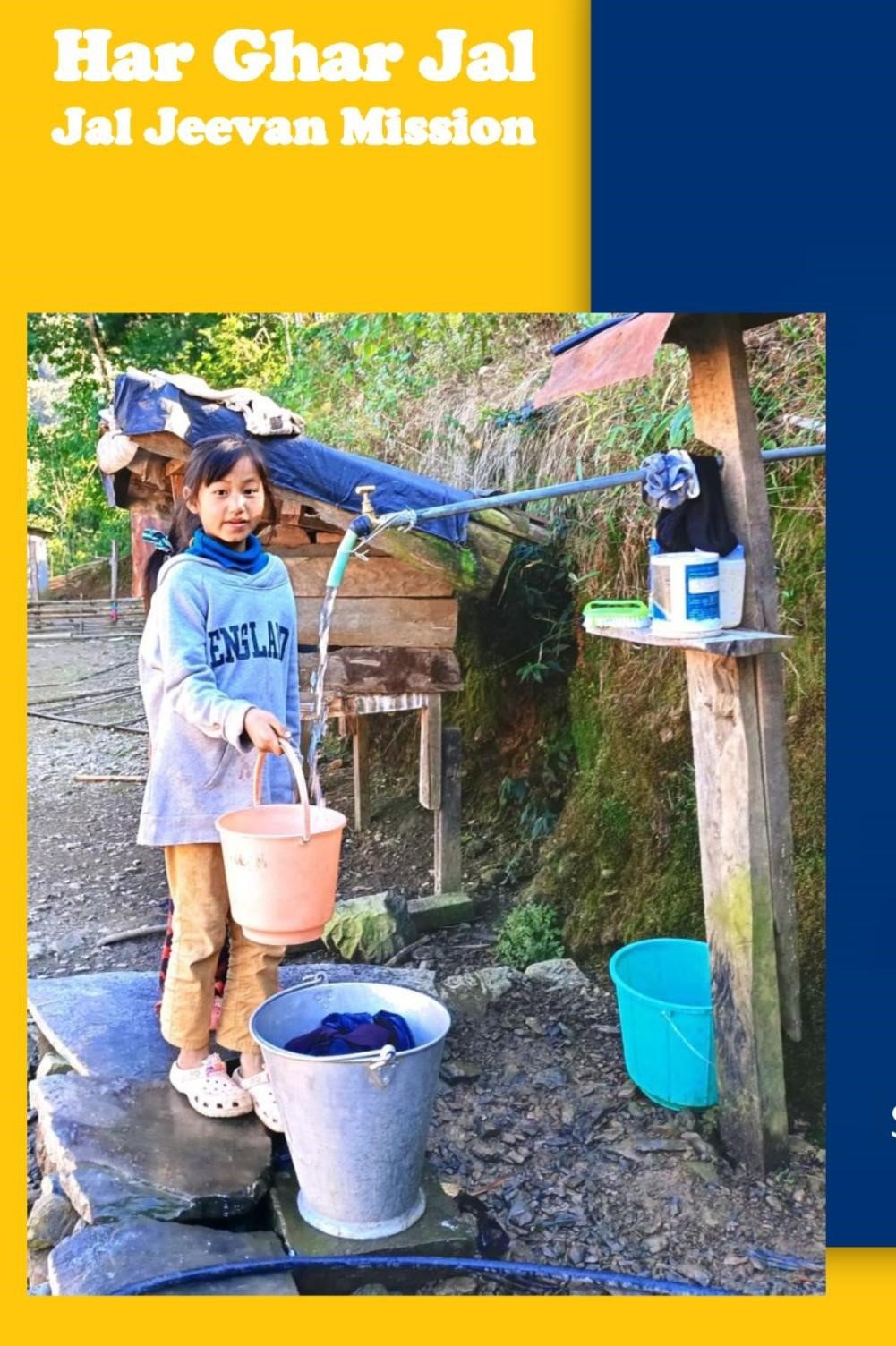In a written reply in Lok Sabha, Minister of State for Jal Shakti, Rajeev Chandrasekhar, today claimed that 14.24 Crore (73.93 percent) of rural households now have tap water supply on their homes.
Highlighting data on the State/ UT-wise Har Ghar Jal report and State/ UT-wise central fund allocated under Jal Jeevan Mission since 2019-20 to 2023-24, Chandrasekhar mentioned that the Government of India is committed to make provision for safe & potable tap water supply in adequate quantity, of prescribed quality and on a regular and long-term basis to all rural households in the country. Towards this end, the Government of India launched the Jal Jeevan Mission (JJM), to be implemented in partnership with states, in August 2019. Drinking Water is a State subject, and hence, the responsibility of planning, approval, implementation, operation, and maintenance of drinking water supply schemes, including those under the Jal Jeevan Mission, lies with State/UT Governments.
According to PIB, the Government of India supports the States by providing technical and financial assistance. The data provided mentioned that Nagaland has 705 (Har Ghar Jal reported) and 401 (Har Ghar Jal certified). Further, Nagaland received a total of 1,466.53 crore under the State/ UT-wise central fund allocated under Jal Jeevan Mission since 2019-20 to 2023-24.
Significant progress has been made in the country since the launch of Jal Jeevan Mission, towards enhancing access to tap water to rural households. At the time of announcement of Jal Jeevan Mission in August 2019, only 3.23 Crore (17 percent) rural households were reported to have tap water connections. So far, as reported by States/ UTs as on February 4, 2024, additional 11.01 Crore rural households have been provided with tap water connections under JJM. Thus, out of 19.27 Crore rural households in the country, more than 14.24 Crore (73.93 percent) households are reported to have tap water supply in their homes.
A few of the major challenges being faced by the States in the implementation of the Jal Jeevan Mission are listed as under:
Lack of dependable drinking water sources in water-stressed areas; Presence of geo-genic contaminants in ground water; Uneven geographical terrain, scattered rural habitations; Lack of capacity of the local village communities to manage and operate in-village water supply infrastructure.
Further, the delay in release of matching State share in few States has also challenged the progress of the Mission.
Download Nagaland Tribune app on Google Play

As per Operational Guidelines of JJM, after making provision of tap connections to all rural households in a village, the Department implementing the scheme provides completion certificate to Gram Panchayat and marks the village as ‘Har Ghar Jal’ village on JJM-IMIS. Subsequently, Gram Panchayats in its Gram Sabha meeting after reading out aloud the work completion report, formally passes resolution certifying itself as ‘Har Ghar Jal’ village. The copy of certificate provided by implementing department, resolution passed by Gram Sabha, and a small video capturing the Gram Sabha is reflected on JJM Dashboard and village is marked certified in JJM-IMIS. As such, due to time lag in the two processes, the difference exists in Har Ghar Jal reported and certified villages.
States/ UTs, are being regularly advised during various review meetings, field visits, conferences, etc. to provide tap water connections to all households and complete the HGJ certification. Moreover, time and again States are advised to organize special Gram Sabha meetings for Har Ghar Jal certification after completion of tap water supply works in the village.
Under JJM, to ensure usage of quality material and quality construction, States have been advised to engage third party inspection agencies to check the quality of implementation and inspection of work before payment. Department of Drinking Water & Sanitation also undertakes annual assessment of the functionality of household tap water connections provided under the Mission, through an independent third-party agency, based on standard statistical sampling. During the functionality assessment 2021-22, it was found that 86% of households had working tap connections. Out of these, 85% were getting water in adequate quantity, 80% were getting water regularly as per the schedule of water supply for their piped water supply scheme, and 87% of households were receiving water as per the prescribed water quality standards.
To bring transparency and effective monitoring, an online ‘JJM dashboard’ & mobile App has been created, which provides State/ UT, district, and village-wise progress as well as status of provision of tap water supply to rural homes.
Further, to ensure universal coverage through tap water connection, the Department has evolved a comprehensive multi-level and multi-format system of monitoring and evaluation of the implementation of programme, linking AADHAR of the head of household for targeted delivery and monitoring of specific outcomes, subject to statutory provisions, including geo-tagging of assets created, third-party inspections before making payments, measurement and monitoring of water supply in villages through sensor-based IoT solution etc.
Water being a State subject, discrepancies, if any observed in the reported data and ground realities, through various monitoring mechanisms envisaged under the Mission, are taken up with respective State Governments for taking requisite immediate corrective action.

